I’ll now show you some charts that summarize the material presented in the last two posts, and after that I’ll give you my takeaways.
Here’s the SMI for all of the cameras simulated:
There are two clear winners here, the XYZ response, and the optimized set of Gaussians. There are five losers: The Leica M8, Sigma DP1 Merrill, the Hasselblad H3D, and the narrowest and widest of the fixed-width Gaussians.
Total RMS noise:
The DP1 Merrill gets the booby prize.
The chromaticity component of the RMS noise:
The luminance component of the RMS noise:
And finally, to hammer home the fact that accuracy is not highly correlated with noise:
My conclusions:
- The people who say that modern CMOS sensors provide worse color than old CCD ones are wrong, at least for the CCD data that I can get my hands on.
- Those who say that modern CMOS sensors sacrifice color accuracy to obtain low noise are wrong, at least when ETTR exposures are used.
- It’s even wrong to say that there is a strong tradeoff between color accuracy and low noise. The XYZ and optimum Gaussian results belie that assertion.
- It is possible to define color filter array transmission spectra that produce much better accuracy than today’s consumer cameras, with noise that is about the same.
- I suspect the reason why we don’t see those transmission spectra is that the dyes to create them are expensive or don’t exist.
- The Sigma DP1 Merrill is an outlier, with spectral response that manages to simultaneously be inaccurate and very noisy.
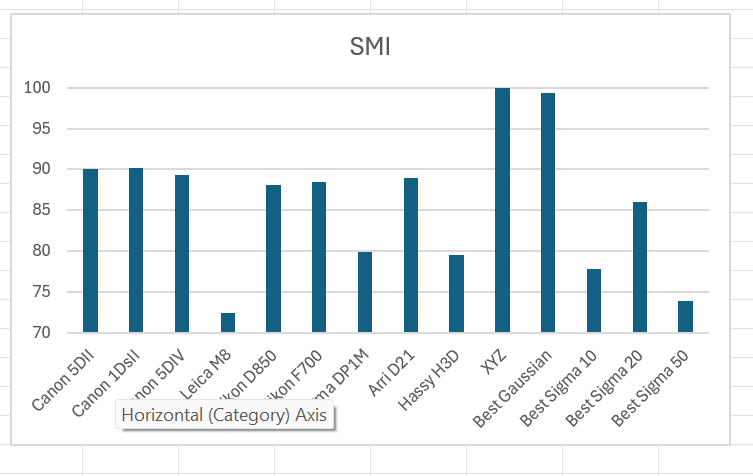
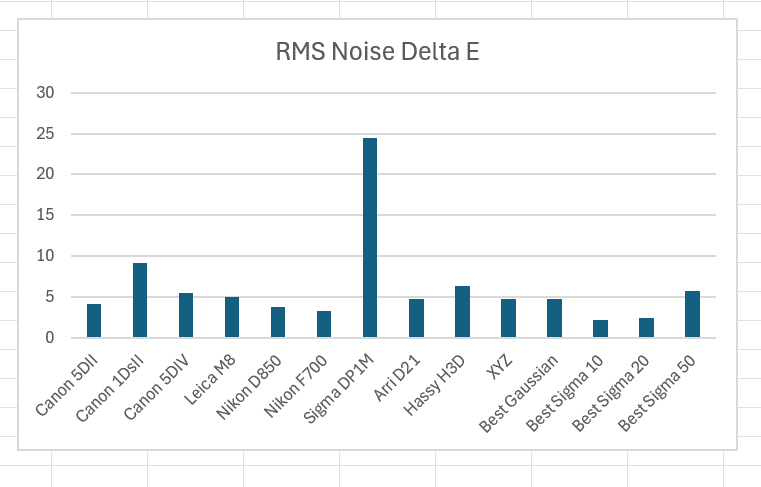
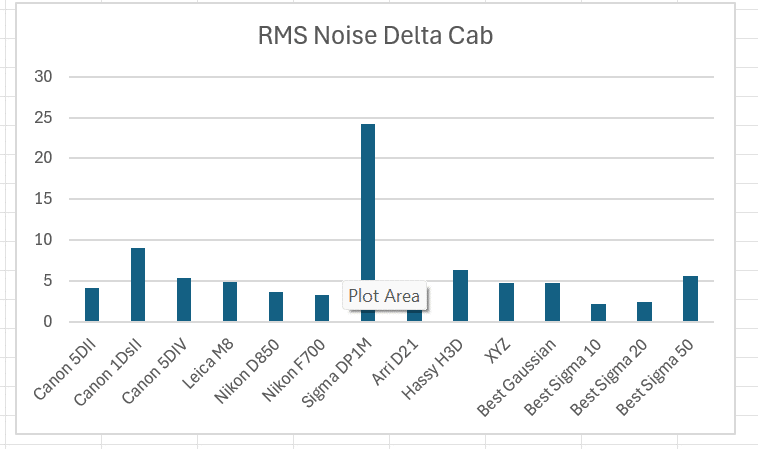
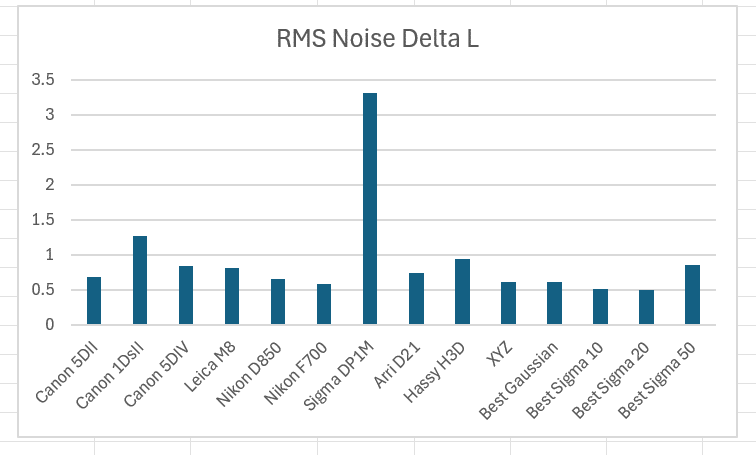
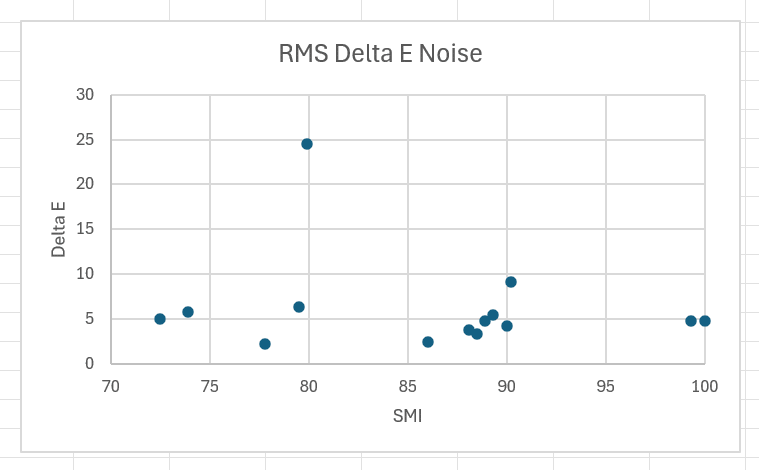
One aspect of low light performance is low noise under warm lighting.
At sub-2700K, many older cameras end up with tremendously large WB multipliers for the blue channel, when compared to “modern” CFAs.
This leads to really horrendous chroma noise in real-world low-light scenarios that often have warm color temperatures.
I do find something attractive about the colors taken with these older sensors versus newer ones, but I don’t think it’s due to better accuracy. It’s probably pleasing inaccuracy of some sort.
(my “old style CFA” cameras are the original Canon 5D and the 1Ds3, my newer ones are 60D and 1Dx2, for reference)
Thanks for that observation. See this:
https://blog.kasson.com/the-last-word/visible-noise-and-cfa-filter-spectra-part-four/